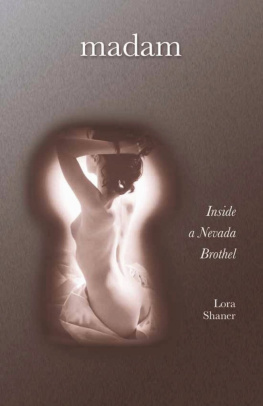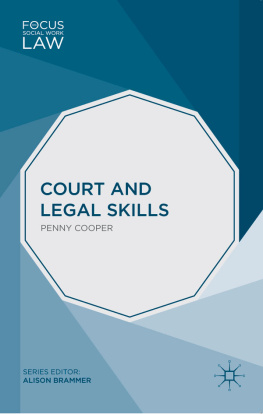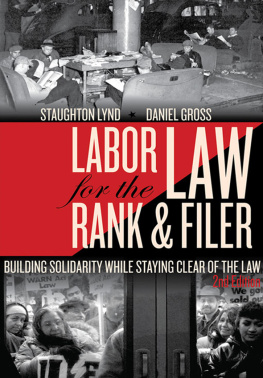Sex and Stigma
Stories of Everyday Life in Nevadas Legal Brothels
Sarah Jane Blithe, Anna Wiederhold Wolfe, and Breanna Mohr
NEW YORK UNIVERSITY PRESS
New York
NEW YORK UNIVERSITY PRESS
New York
www.nyupress.org
2019 by New York University
All rights reserved
References to Internet websites (URLs) were accurate at the time of writing. Neither the authors nor New York University Press is responsible for URLs that may have expired or changed since the manuscript was prepared.
Library of Congress Cataloging-in-Publication Data
Names: Blithe, Sarah, author. | Wolfe, Anna Wiederhold, author. | Mohr, Breanna, author.
Title: Sex and stigma : stories of everyday life in Nevadas legal brothels / Sarah Jane Blithe, Anna Wiederhold Wolfe, Breanna Mohr.
Description: New York : New York University Press, [2019] | Includes bibliographical references and index.
Identifiers: LCCN 2018021501| ISBN 9781479859290 (cl : alk. paper) | ISBN 9781479820702 (pb : alk. paper)
Subjects: LCSH: BrothelsNevada. | ProstitutionNevada. | SexNevada.
Classification: LCC HQ145.N3 B55 2019 | DDC 306.709793dc23
LC record available at https://lccn.loc.gov/2018021501
New York University Press books are printed on acid-free paper, and their binding materials are chosen for strength and durability. We strive to use environmentally responsible suppliers and materials to the greatest extent possible in publishing our books.
Manufactured in the United States of America
10 9 8 7 6 5 4 3 2 1
Also available as an ebook
The Story of Our Collaboration
We do a pretty good job of taking care of each other.... I am supporting my mom right now.
Molly
This project began when the first and second authors, Sarah and Anna, began a study with the goal of understanding an enduring local problem: the relationships between legal brothels and the communities in which they are located. Nevada is the only state in the United States that has legalized brothel prostitution. High taxes on these brothels provide
The project became immensely more interesting when our mutual student, Breanna, a legal prostitute, joined us as a research collaborator. Her participation in the project shaped everythingresearch questions, access, methods, and findings. Because she is our student and a member of a vulnerable population, our collaboration required us to think through many ethical dilemmas and to overcome numerous bureaucratic obstacles. Our unique combination of backgrounds, strengths, and challenges as researchers as well as our diverse relationships and approaches to legal prostitution have undoubtedly shaped the outcome of this book. We share our story here, as a way to help our readers understand how our personal biases and preferences created opportunities for a distinctive approach to prostitution research. To share our story, we generated individual vignettes about our collaboration, and then pieced them together, removing redundancies and organizing them into a multivoiced narrative form. We hope that by reading our vignettes in interaction with each other, our readers will be able to see how this research came to emphasize multiple perspectives, voices, and intentions, extending from us, as authors, to how we present data from diverse participants.
Our Collective Story of Collaboration
SARAH: It all started at the Camel Races in Virginia City. The quirky event in Nevadas historic mining town is a fundraiser for Virginia City schools. Local businesses and individual patrons sponsor people to ride camels and ostriches in races. Food vendors sell a variety of cuisines, and spectators can bet on each race. I was surprised to observe that one of the main event sponsors is the Mustang Rancha well-known brothel. While my kids pushed against the fence to get a better view, I looked at my work email on my phone. One of my favorite academic journals, Management Communication Quarterly, called for articles for a special issue about hidden organizations. The call was well written and sounded extremely interesting. I immediately wondered whether I had any research ideas that would be suitable. Just a moment later, the announcer at the camel races made some lewd jokes about the women riding the camels. I was first taken aback, and once I started paying attention, I realized that the women riders were legal prostitutessponsored by local businesses to ride the camels. It suddenly dawned on me that I lived in a place with interesting hidden organizations and stigmatized occupations.
I couldnt stop thinking about conducting research in the brothels. I study organizational communication, and my sweet spot is analyzing aspects of organizational life that are rife with inequalityparticularly in relation to gender. I am also interested in occupational and organizational identities. Research in the brothels seemed like the perfect next project, combining many of my interests. I wanted to get Anna involved, because she is an expert in community-organizational relationships, an aspect of the brothels that I thought would be important to understand.
ANNA: When Sarah approached me with the idea to study the brothels together, I was intrigued. As a relatively new resident to the state of Nevada, I knew little more about the brothels than that they existed. I had not given much thought to the normative aspect of their existencewhether they should exist and what functions they served. As I learned about the mixed reactions from community residents regarding brothels philanthropic activitiesreactions ranging from disgust to appreciationI wanted to understand more about how brothels and their surrounding communities negotiate the tensions constituting their interdependent relationship with each other. I am deeply committed to conducting engaged communication research, rooted in a belief that addressing local problems in collaboration with local people validates the relevance of academic work more than any publication ever could. Therefore, if we were going to go forward with this project, it was important to me that we asked questions that were theoretically important, but also rooted in participants priorities regarding what specific communication problems more directly influence their everyday lived experiences. Ultimately, we published an article in that special issue of MCQ focusing on the communication challenges brothels face due to simultaneous needs to be visible and hidden (a version of that article appears in chapter 9 of this book). However, in writing this first piece, we realized that the context of legal brothel prostitution offered much more to say about how stigma and secrecy create group boundaries that facilitate and obfuscate opportunities for engagement across differences. We could not end our research there.










